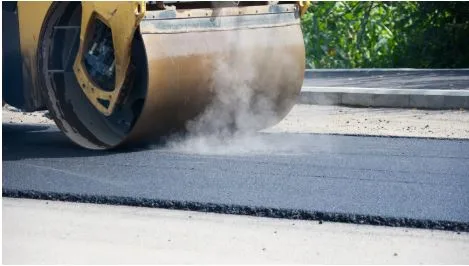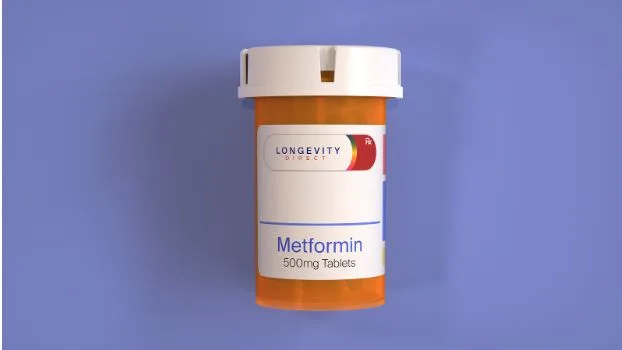How to Maximize ROI with Durable Commercial Paving: Choosing Materials and Maintenance Tips
When you invest in commercial paving, you’re not just buying a surface—you’re buying years of safe access, brand credibility, and operational uptime. The most profitable pavements aren’t always the cheapest to install; they’re the ones that balance initial cost with longevity, reliability, and minimal disruption. This guide walks you through smart material choices and a practical maintenance playbook so your pavement delivers the best return on investment (ROI) over its full life cycle.
ROI Starts with Strategy, Not Just Square Footage
Before you compare bids, clarify what “return” means for your site. For most properties, ROI comes from five places:
- Longevity: Fewer major rehab cycles over 20–30 years.
- Reduced maintenance spend: Lower annual upkeep and fewer emergency repairs.
- Operational continuity: Less downtime during fixes, fewer access disruptions.
- Risk reduction: Fewer trip hazards, better drainage, safer winter performance.
- Curb appeal & compliance: Clean striping, smooth entries, ADA-compliant access that supports leasing and customer satisfaction.
The goal is not the lowest upfront price—it’s the lowest life-cycle cost and the highest uptime.
Choosing the Right Materials
Asphalt: Flexible, Fast, and Forgiving
Asphalt remains the workhorse of commercial paving for parking lots, retail centers, and light industrial sites. It’s flexible—able to tolerate minor subgrade movement—and fast to construct, minimizing business disruption. With proper base prep and routine sealcoating, asphalt surfaces can provide excellent service life. Key considerations:
- Mix design: For high-traffic or heavy-vehicle areas, specify a polymer-modified mix or a stone matrix asphalt to resist rutting.
- Thickness: Don’t skimp. Light-duty parking may perform with 3–4 inches of asphalt over a well-compacted base; loading docks and drive lanes often need 6–8 inches or more.
- Sealcoating: A scheduled sealcoat cycle slows oxidation and extends life.
Best for: Retail lots, office parks, schools, logistics areas with careful thickness design.
Concrete: Durable, Rigid, and Stable
Concrete can outlast asphalt in heavy-load zones and high-temperature climates due to its compressive strength and resistance to rutting. Joints and proper curing are critical; poor jointing leads to cracking and costly fixes.
- Use in heavy-load areas: Approaches to dumpsters, loading zones, bus lanes, and drive-thrus benefit from concrete panels or thickened asphalt alternatives.
- Reflectivity: Concrete’s light color improves nighttime visibility and can reduce lighting needs.
- Initial cost vs. life cycle: Expect higher upfront cost but fewer structural rehabs if built right.
Best for: High-stress lanes, intersections, truck aprons, and sites prioritizing longevity and structural strength.
Permeable Pavers & Porous Systems: Drainage and Compliance
Where stormwater rules are strict—or ponding is chronic—permeable pavers and porous asphalt/concrete help infiltrate runoff and reduce the load on drainage infrastructure.
- Subbase reservoir: Requires a carefully graded, open-graded aggregate layer.
- Maintenance: Vacuum sweeping is essential to keep voids open.
- Hybrid approach: Use permeable systems in strategic zones (e.g., perimeter stalls) while keeping drive lanes conventional.
Best for: Sites with stormwater credits, environmental goals, or chronic standing water.
Recycled & Warm-Mix Options: Sustainability with Savings
- RAP (reclaimed asphalt pavement) and RCA (recycled concrete aggregate) can cut material costs and carbon footprint without sacrificing performance—if quality-controlled.
- Warm-mix asphalt permits lower production temperatures, reducing emissions and improving compaction in cooler weather.
Best for: Owners pursuing sustainability targets or cost efficiencies without compromising quality.
Design & Site Preparation: Where ROI Is Won (or Lost)
Subgrade & Base
Pavement is only as strong as what’s underneath it. Invest in:
- Soil evaluation: Identify expansive clays, organic soils, or poor drainage early.
- Compaction & stabilization: Lime, cement, or geogrid reinforcement may be warranted for weak subgrades.
- Base quality: Well-graded, well-compacted aggregate base is non-negotiable.
Drainage First, Always
Water is pavement’s #1 enemy. Plan for:
- Positive slope: Target 1–2% cross-slope to move water away.
- Tight inlets & clean basins: Prevent undercutting and infiltration that destabilize subgrade.
- Edge protection: Concrete curb and gutter or stabilized shoulders to protect edges from unraveling.
Climate & Use Profile
- Freeze-thaw: Favor mixes and details that resist moisture infiltration and cracking.
- Heat & UV: Polymer-modified binders and appropriate surface treatments curb rutting and oxidation.
- Traffic mix: Map turning radii, truck routes, and stacking lanes—design those zones for higher loads.
Details That Pay Dividends
- Thickened sections at stress points: Dumpster pads, drive-thrus, entry aprons.
- Joint detailing & dowels (concrete): Reduce faulting and slab movement.
- Transition planning: Smooth tie-ins to sidewalks, ADA ramps, and roadways.
Contractor Selection & Specs: Control the Variables
The same specification built by two different crews can perform very differently. Protect ROI with:
- Performance-based specs: Define density, smoothness, and strength targets—not just “install X inches.”
- Mockups & test strips: Ensure the team can meet compaction and finish requirements before full production.
- Material certifications & QC: Require plant tickets, mix design submittals, and field test reports.
- Warranties that matter: Favor warranties tied to measurable outcomes (e.g., raveling, rutting, or slab movement thresholds) rather than generic workmanship language.
- Phasing plan: Minimize business disruption with night work or staged closures.
Maintenance That Maximizes Life
A strong maintenance program turns a good installation into a great investment. Here’s the practical, high-ROI plan for commercial paving owners and facility managers.
First 12 Months (Set the Baseline)
- Routine sweeping & debris removal: Prevents gravel and organics from acting like sandpaper.
- Early crack sealing (as needed): Don’t let water in. Address thermal cracks as soon as they appear.
- Paint & signage: Fresh, high-contrast striping improves safety and reduces liability.
Ongoing, Every Quarter
- Site walk & photo log: Inspect for ponding, edge failures, block cracking, oil spotting, and joint distress. Document conditions to catch trends early.
- Inlet & basin cleaning: Keep drainage free-flowing.
- Spot cleaning oil & chemicals: Petroleum breaks down asphalt binders; lift spills promptly.
Annually
- Sealcoat (asphalt) every 2–4 years depending on climate and traffic: Extends surface life and refreshes appearance; more frequently in harsh sun or heavy traffic zones.
- Crack sealing (as needed): Keep water out—this is the most cost-effective treatment you can do.
- Pothole patching: Mill and patch rather than skin-patch to avoid reflective failures.
- Re-stripe: Maintain ADA compliance, fire lanes, and wayfinding clarity.
7–12 Years (Typical Asphalt Mill & Overlay Window)
- Mill & overlay drive lanes: Restore ride quality and structural capacity before deep failures propagate.
- Concrete panel replacements (as needed): Address faulted or broken slabs in high-load areas.
Winter Operations
- De-icing: Use pavement-friendly products; avoid over-salting permeable systems.
- Plow blade settings: Keep shoes slightly elevated to avoid scarring surfaces and snagging pavers.
- Drainage checks after thaws: Ensure meltwater isn’t refreezing in low points.
Budgeting & KPIs: Manage What You Measure
Treat your pavement like any other capital asset:
- Life-cycle cost analysis (LCCA): Compare alternatives on total cost of ownership over 20–30 years (initial construction + maintenance + downtime + risk).
- Condition index (PCI-style) tracking: Assign and update a simple 0–100 score during quarterly walks.
- Annual cost per square foot: Monitor spend vs. plan; unexpected spikes signal underlying issues.
- Response time to defects: Aim to seal cracks within 30 days of identification and patch within 60.
- Downtime hours avoided: Quantify the value of night work or phasing that keeps doors open.
Sustainability That Pays Off
Sustainability isn’t just a feel-good add-on—it can improve ROI when done thoughtfully.
- Cooler surfaces: Concrete or light-colored sealers reduce heat island effect, potentially lowering HVAC and lighting costs.
- Material circularity: Specify RAP/RCA targets where compatible with performance.
- Permeable zones: Lower stormwater fees and reduce costly drainage upgrades.
- Right-sized lighting: Better reflectivity and fresh striping can allow fewer fixtures or lower wattage.
A Quick, High-ROI Checklist
Use this as a pre-bid and pre-maintenance scorecard:
- Geotechnical review completed; weak subgrades stabilized.
- Drainage plan ensures positive slopes and protected edges.
- Mix designs and thicknesses matched to traffic loads and climate.
- Heavy-load zones upgraded (concrete pads or thicker asphalt).
- Performance-based specs, test strips, and QC requirements in the contract.
- Phasing or night work plan to minimize operational disruption.
- Maintenance calendar: quarterly inspections, annual crack sealing, sealcoating every 2–4 years.
- Photo logs, PCI tracking, and budget KPIs in place.
- Sustainability measures aligned to cost savings (RAP, warm-mix, permeable zones).
- Clear warranty terms linked to measurable performance.
Bringing It All Together
Maximizing ROI with durable commercial paving boils down to three principles:
- Engineer the foundation and drainage first. The best mix won’t save a poor subgrade or bad slopes.
- Match materials to use. Asphalt is fast and flexible for general areas; concrete shines where loads concentrate; permeable systems solve water headaches.
- Maintain proactively. Small, scheduled treatments—especially crack sealing and sealcoating—extend service life dramatically and avoid expensive reconstruction.
With a thoughtful design, quality-controlled construction, and a disciplined maintenance plan, your pavement will look better, perform longer, and cost less over its full life—delivering the dependable ROI every commercial property needs.





